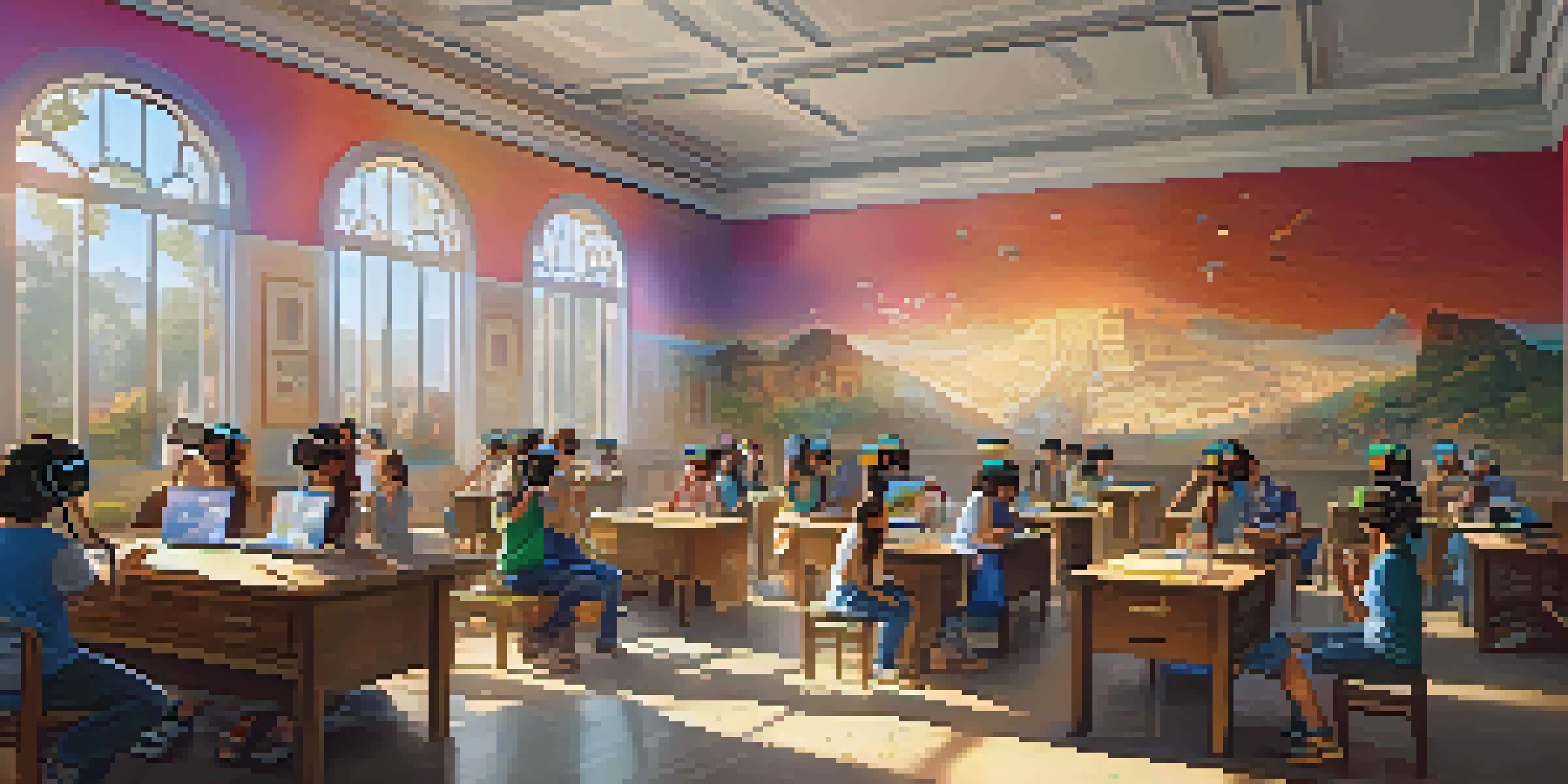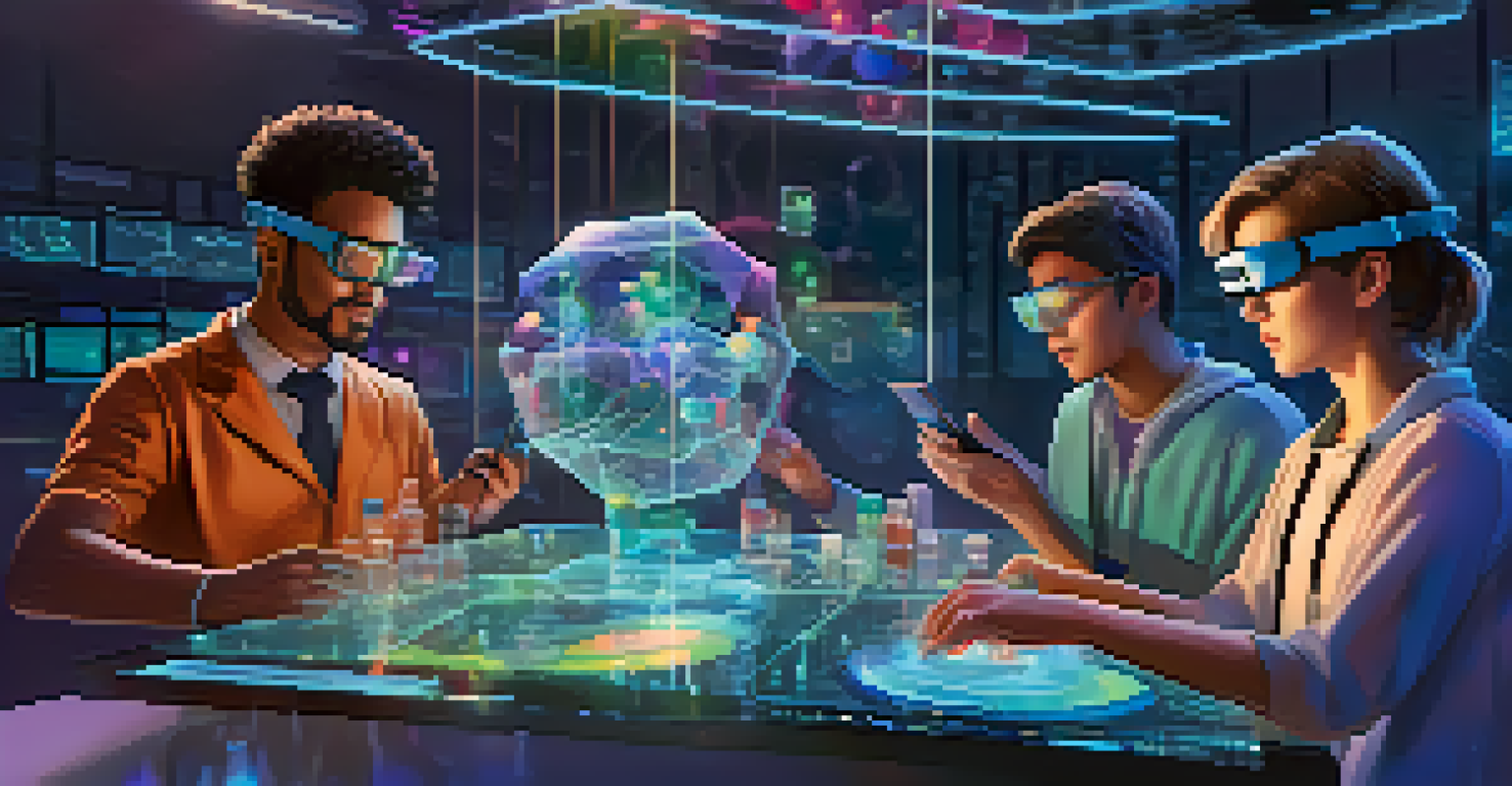Using Virtual Reality to Transform Digital Learning

Understanding Virtual Reality and Its Impact on Learning
Virtual reality (VR) immerses users in a simulated environment, creating experiences that feel real. In education, this technology allows learners to engage with content in innovative ways, enhancing understanding and retention. Imagine exploring ancient civilizations or conducting complex science experiments without leaving your classroom; that's the power of VR in learning.
Virtual reality allows us to explore and experience things that are impossible in the real world, making learning an adventure.
With VR, traditional learning methods are evolving to meet the needs of today's digital natives. Students can interact with 3D models, visualize concepts, and participate in dynamic simulations. This not only makes learning more engaging but also caters to different learning styles, whether visual, auditory, or kinesthetic.
Moreover, VR breaks geographical barriers, enabling students from around the world to access the same rich learning experiences. This democratization of education helps to level the playing field, providing opportunities for all learners, regardless of their location.
Enhancing Engagement Through Immersive Experiences
One of the standout features of VR is its ability to captivate learners' attention. When students are immersed in a 360-degree environment, their focus sharpens, making learning feel like an adventure rather than a chore. This heightened engagement can lead to deeper understanding and a greater willingness to explore complex subjects.

For example, a history class that uses VR to transport students to the Roman Empire allows them to walk through ancient streets, observe historical events, and interact with virtual citizens. Such experiences foster curiosity and encourage students to ask questions, sparking meaningful discussions in the classroom.
Additionally, immersive experiences can make abstract concepts more tangible. When students can visualize and manipulate representations of scientific phenomena or mathematical equations in a virtual space, they can grasp difficult ideas more easily.
Fostering Collaboration in Virtual Learning Environments
Virtual reality is not just about individual learning; it also promotes collaboration among students. Multi-user VR platforms allow learners to work together in real-time, regardless of their physical locations. This collaborative aspect mirrors real-world teamwork, preparing students for future careers where collaboration is key.
The future of education is not about screens; it is about immersive experiences that engage and inspire learners.
In a VR classroom, students can engage in group projects, conduct experiments, or even participate in debates all within a shared virtual space. This shared experience fosters communication skills and encourages peer-to-peer learning, as students can learn from each other's perspectives and insights.
Furthermore, collaborative VR experiences can enhance problem-solving abilities. When faced with challenges in a virtual environment, students must brainstorm solutions together, fostering critical thinking and teamwork skills essential for success in the modern workforce.
Personalizing Learning with Adaptive VR Technologies
Another significant advantage of VR in education is its ability to personalize learning experiences. Adaptive VR technologies can tailor content to meet individual students' needs, allowing them to learn at their own pace. This customization can be particularly beneficial for students who may struggle in traditional learning environments.
For instance, a VR program can assess a student's understanding of a topic and adjust the difficulty level of subsequent challenges accordingly. This ensures that every learner is appropriately challenged, reducing frustration and promoting confidence.
By providing personalized experiences, VR can also help in identifying areas where students may need additional support. Educators can track progress within the VR platform, allowing for targeted interventions that enhance learning outcomes.
Bridging Theory and Practice with Simulation Training
VR enables students to bridge the gap between theory and practical application through simulation training. In fields like medicine, engineering, and aviation, VR provides a safe space for learners to practice skills without the real-world consequences of mistakes. This hands-on experience can be invaluable in preparing students for their future careers.
For example, medical students can perform virtual surgeries, gaining experience and confidence before entering the operating room. Similarly, engineering students can design and test prototypes in a virtual environment, allowing for experimentation without the costs associated with physical materials.
These simulations foster experiential learning, where students can actively apply their knowledge in realistic scenarios. Such opportunities not only enhance skill acquisition but also boost overall retention by allowing students to learn from their experiences.
Overcoming Challenges in Implementing VR in Education
Despite its potential, the integration of VR in educational settings comes with challenges. One of the primary obstacles is the cost associated with acquiring VR hardware and software. Schools and institutions may struggle to secure funding, which can limit access to this transformative technology.
Moreover, there is a learning curve for educators to effectively implement VR in their teaching practices. Professional development and training are essential to ensure teachers feel confident using VR tools and can fully leverage their capabilities to enhance learning.
Additionally, there are concerns regarding the content available for VR education. Ensuring that the resources are aligned with curriculum standards and educational goals is crucial for maximizing the impact of VR on student learning.
The Future of Digital Learning with Virtual Reality
As technology continues to evolve, the future of digital learning with VR looks promising. We can expect to see advancements that make VR more accessible and affordable for educational institutions. This democratization of technology will open doors for a wider audience, allowing more students to benefit from immersive learning experiences.
Moreover, as VR content becomes more diverse and aligned with educational standards, the possibilities for innovative teaching methods will expand. This evolution will likely lead to new pedagogical approaches that prioritize experiential learning and collaboration.

In conclusion, the integration of virtual reality into digital learning holds immense potential to transform education. By engaging students in unique, immersive experiences, we can cultivate a new generation of learners who are better prepared for the challenges of the future.